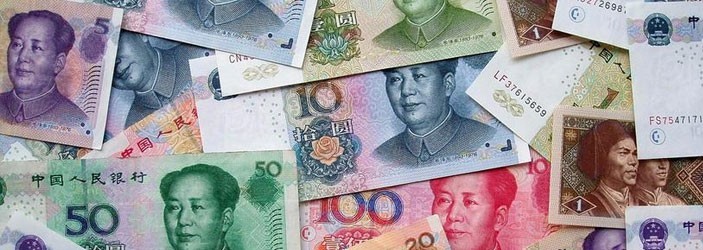China Takes Another Currency Step
Post on: 22 Май, 2015 No Comment

Jean Yung and
Esther Fung
Updated Jan. 31, 2011 12:01 a.m. ET
SHANGHAI—China will allow banks to trade currency swaps for corporate clients starting March 1, extending the use of the financial derivative beyond the interbank market—a move that facilitates corporate foreign hedging as Chinese trade continues to expand and cross-border investments accelerate.
The announcement comes as Beijing steps up efforts to let the yuan be used more widely outside China, loosening its grip on the currency as it aims to become less dependent on the dollar for trade and investment. Earlier this month, China launched a pilot program to let domestic companies take Chinese currency overseas to invest, building on an experiment that allows Chinese and foreign companies to settle cross-border trade in yuan.
The currency swap is an arrangement in which two parties exchange specific amounts of yuan and another currency, and a series of interest payments on the cash flows.
Traders said foreign companies, in particular, are eager to enter into currency swaps as a way to hedge interest-rate risks from bonds, loans and other types of debt denominated in yuan.
Chinese banks have been allowed to trade currency swaps in the interbank market since August 2007, according to the State Administration of Foreign Exchange, but dealers said demand for the product was low and only a few transactions took place every year.
Banks have been lobbying SAFE to allow corporates to enter into currency swaps for some time, said an Asian bank trader based in Shanghai.
Letting corporate clients enter into currency swaps could also pave the way for China to allow foreign companies to issue yuan-denominated bonds in China, traders said.
In a statement Sunday, SAFE said the new currency-swap rules are meant to simplify market-entry approval procedures by giving banks more flexibility. Banks that have been eligible for at least one year to issue foreign-exchange swaps, another foreign-exchange derivative, will be able to issue currency swaps to customers without seeking additional approval.
Currency swaps differs from foreign-exchange swaps in that they include interest-rate payments and typically have longer durations—one to five years. Currency swaps are used by investors to hedge both foreign-exchange risk and interest-rate risk, while foreign-exchange swaps hedge only foreign-exchange risk.
Lenders will also be allowed to determine the durations of swaps and the specific currencies they offer to clients; traders said most currency swaps will likely be between the dollar and the yuan.
The interest rates in currency swaps can also be decided by the two parties, though they must be in line with the central bank’s rules on deposit and loan rates, SAFE said.
SAFE added the foreign-currency-denominated interest income received by a bank cannot be individually settled and must be managed as part of the bank’s existing foreign-currency-income segment.
Traders said they expect currency-swap trading volumes to grow significantly after the new rule takes effect, though banks may initially have a hard time pricing longer-term swaps.
There are few benchmarks to look at because forex swaps are usually much shorter in duration, said a trader at a North American bank based in Shanghai.














